Table of Contents
Introduction
Algebra often comes across as a challenging subject for many, but it’s a crucial stepping stone in understanding the language of mathematics. In this guide, we delve into the fundamentals of algebra through the lens of WH questions – What, Why, and How.
What is Algebra?
Algebra is a branch of mathematics that uses symbols and letters to represent numbers and quantities in formulae and equations.
It’s like a puzzle where we solve for the unknown values that make the equation true.
The term “algebra” is derived from the Arabic word “al-jabr,” which roughly translates to “reunion of broken parts.” This term comes from the title of the book “Al-Kitab al-Mukhtasar fi Hisab al-Jabr wal-Muqabala” (The Compendious Book on Calculation by Completion and Balancing) by the Persian mathematician Muhammad ibn Musa al-Khwarizmi, written around 820 AD.

The book was a groundbreaking work that dealt with solving linear and quadratic equations. The term “al-jabr” within the context of the book referred to the operation of moving a subtracted term to the other side of an equation, essentially “reuniting” it with the rest of the equation. For instance, turning x−5=7x−5=7 into x=7+5x=7+5 by adding 5 to both sides could be seen as an act of “al-jabr”.
“Al-jabr” also implied a method of restoration or completion when terms were missing in an equation, filling in the gaps to balance and solve it. Over time, the Latin translations of al-Khwarizmi’s work introduced the term “algebra” into the European languages, which eventually became “algebra” in English.
The concept makes sense because much of algebra as we know it involves the manipulation of equations and expressions to find the values of unknown quantities, which can be thought of as “reuniting” the unknowns with their solutions or “completing” the broken parts of a mathematical problem.
Why is Algebra Important?
- Problem-Solving: Algebra equips learners with the skills to solve a variety of real-world problems.
- Critical Thinking: It enhances logical reasoning and critical thinking by presenting problems in a structured manner.
- Foundation for Advanced Study: Mastery of algebra is essential for advanced study in mathematics, science, engineering, and many other fields.
How to Approach Algebra?
- Understanding the Basics: Grasp the fundamental operations and principles like addition, subtraction, multiplication, and division. Our recent article on pre-algebra can help you to master the basics.
- Practice Regularly: Consistent practice is the key to mastering algebra. Engage in solving various algebraic equations to improve your skills.
- Seek Help When Stuck: Don’t hesitate to seek help from teachers, peers, or online resources whenever you hit a roadblock.
Breaking it Down
Algebra may seem daunting at first, but with the right approach and a curious mindset, it becomes a fascinating subject that opens up a world of possibilities. Remember, the journey of mastering algebra is a marathon, not a sprint. Equip yourself with patience, practice, and persistence to unravel the mysteries of algebra.
Components of Algebra
The following shorthand table will show you the main components of algebra, which are crucial to learn in order to master algebra.
Component | Definition | Example | Use Case |
|---|---|---|---|
Arithmetic | Branch of mathematics dealing with numbers and basic operations. | 2 + 3 × 4 | Basic calculations in everyday life and foundational for all math. |
Operators | Symbols that indicate the operation to perform on numbers or variables. | +, -, ×, ÷, ^ | To perform mathematical operations in equations and expressions. |
Variables | Symbols representing unknown values in expressions and equations. | In x + 2 = 4, x is a variable. | To represent quantities that can change or are unknown. |
Constants | Fixed values that do not change within an expression or equation. | In 3x + 4, 4 is a constant. | To represent known quantities in equations and expressions. |
Expressions | Combinations of variables, constants, and operators representing a value; without an equality sign. | 3x + 5 | To represent mathematical relationships without stating equality. |
Equations | Statements that two expressions are equal, indicated by an equality sign. | 2x + 3 = 7 | To solve for unknown variables and model real-world situations. |
Inequalities | Statements similar to equations but with inequality symbols. | x + 5 > 10 | To describe a range of possible values or conditions. |
Coefficients | Numerical factors of terms with variables. | In 7x, 7 is the coefficient. | To determine the rate of change or scaling factor for variables. |
Terms | Separate elements in an expression or equation, combined with addition or subtraction. | In 3x + 2y + 7, 3x, 2y, and 7 are terms. | To isolate or combine like terms in simplification processes. |
Polynomials | Expressions with multiple terms where each term is a variable raised to a non-negative integer power. | x^2 + 3x + 2 | To model a wide range of problems from physics, economics, etc. |
Functions | Relations where each input has a single output, often written as f(x). | f(x) = 2x + 3 | To describe how one quantity is determined by another. |
Algebraic Fractions | Fractions containing algebraic expressions in the numerator or denominator. | x+2/x-2 | To represent parts of algebraic quantities or ratios. |
Radicals | Expressions containing a root symbol, which indicates the root of a number or expression. | √x or ∛(x+1) | To solve equations involving powers and roots. |
Exponents | Indicate how many times a number, known as the base, is multiplied by itself. | x^3 | To represent repeated multiplication and model exponential growth or decay. |
Absolute Value | Represents the distance of a number from zero on the number line, without considering direction. | |x| or |-5| = 5 | To find the magnitude of a number or variable, regardless of its sign. |
Factorization | The process of breaking down a number or expression into a product of its factors. | Factoring x^2 – 9 into (x+3)(x-3) | To simplify expressions and solve equations. |
Domain and Range | The set of all possible input values (domain) and all possible output values (range) for a function. | For f(x) = 1/x, Domain: x ≠ 0, Range: y ≠ 0 | To determine the set of possible values for functions. |
Algebraic Identities | Equations that are true for all values of the variables involved. | (a+b)^2 = a^2 + 2ab + b^2 | To simplify expressions and solve equations more easily. |
Binomial | A polynomial with two terms. | 3x + 2 | To represent simple polynomial relationships. |
Trinomial | A polynomial with three terms. | x^2 + 3x + 2 | To describe more complex polynomial relationships than binomials. |
Quadratic Equations | Equations where the highest exponent of the variable is 2. | ax^2 + bx + c = 0 | To model motions, optimize solutions, and find turning points in problems. |
Discrete Mathematics | The study of mathematical structures that are fundamentally discrete rather than continuous. | Graph theory, set theory | To analyze discrete systems, such as computer algorithms or networks. |
Computational Algebra | A field of algebra that studies algorithms and software for manipulating algebraic expressions and objects. | Using software to solve x^5 – x + 1 = 0 | To solve complex algebraic problems using computational tools. |
Applications of Algebra in Data Science
Algebra, particularly linear algebra, is fundamental to data science. Here are some of its applications within this field:
Vector and Matrix Operations
- Vector and matrix operations form the core of many data science algorithms. They are used in data pre-processing, data manipulation, transformations, and computations which are essential for analyzing large datasets.
Linear Regression
- Linear regression, a basic and commonly used type of predictive analysis, is heavily grounded in algebraic principles. It helps in understanding the linear relationship between dependent and independent variables, which is key for prediction and forecasting.
Machine Learning Algorithms
- Many machine learning algorithms are built upon algebraic concepts. For instance, the optimization of cost functions in algorithms like Support Vector Machines or Neural Networks often requires knowledge of algebra.
Dimensionality Reduction
- Techniques such as Principal Component Analysis (PCA) that are used for dimensionality reduction, rely on linear algebra. These techniques are crucial for handling high-dimensional data and avoiding the curse of dimensionality.
Eigenvalues and Eigenvectors
- Eigenvalues and eigenvectors are fundamental in understanding and working with data distributions, which is key in many machine learning and data analysis methods.
Algorithm Efficiency
- Algebraic simplification can lead to more efficient algorithms, which is essential for processing large datasets quickly and accurately.
Deep Learning
- In deep learning, algebraic concepts are used in the architecture of deep networks, training algorithms, and in the backpropagation algorithm for adjusting the weights of the connections.
Natural Language Processing (NLP)
- Algebra is used in NLP for tasks like semantic analysis, where techniques like Latent Semantic Analysis (LSA) rely on algebraic concepts to identify patterns and relationships in text data.
Clustering and Classification
- Algebraic methods are used to measure distances and similarities in data, which are critical for clustering and classification tasks.
Image Recognition
- In image recognition, algebraic operations are used to process and analyze image data, helping in the identification of patterns and features within images.
In sum, algebra serves as a robust toolkit for data scientists, enabling them to manipulate, analyze, and interpret complex data in a meaningful way. Its principles are deeply ingrained in the algorithms and techniques that are the bedrock of data science, making algebra a requisite area of knowledge for anyone looking to delve into this field.
Algebra and types
Algebra is a branch of mathematics that uses symbols, letters, and numbers to express relationships and solve problems.
Think of algebra as a way to solve puzzles where you need to find a missing number.
For example, if you have 5 + ? = 10, algebra helps you figure out that the missing number is 5.
The following table shows the types of algebra, definitions and examples:
| Type of Algebra | Definition | Example |
|---|---|---|
| Pre-Algebra | Introduction to basic arithmetic operations, fractions, decimals, and introductory algebra concepts. | 4 + ? = 9 |
| Elementary Algebra | Fundamental algebraic expressions, equations, and working with variables. | Solving x + 5 = 10 |
| Intermediate Algebra | More complex equations, quadratic equations, exponential, and logarithmic expressions. | Solving x^2 + 3x – 4 = 0 |
| Linear Algebra | Vectors, vector spaces, linear transformations, and systems of linear equations. | Solving a system of linear equations |
| Abstract/Modern Algebra | Algebraic structures like groups, rings, and fields. | Studying the properties of groups |
| Boolean Algebra | Binary values and logic operations, fundamental in computer science and engineering. | Logic gates in digital circuits |
| Relational Algebra | Sets, relations, and operations to process and query data in databases. | Querying databases |
| Computational Algebra | Solving algebraic problems using computers. | Solving polynomial equations |
| Homological Algebra | Studies homology and cohomology groups. | Calculating homology groups |
| Universal Algebra | Studies properties common to all algebraic structures. | Studying general structure properties of groups, rings, and fields |
Usually, people think of Algebra1 and Algebra2 as types of algebra but these are courses.
Algebra 1 and Algebra 2 are courses that build upon each other, each focusing on different algebraic concepts and skills.
Algebra 1
Algebra 1 is typically the first course in high school mathematics that introduces students to the fundamental principles of algebra. It’s often a student’s first in-depth encounter with mathematical abstraction and problem-solving techniques involving algebraic concepts. Here’s what is generally covered:
- Linear Equations: Understanding and solving single-variable and multi-variable equations.
- Functions: Learning the basics of functions, including linear, quadratic, and exponential functions.
- Inequalities: Solving and graphing inequalities and systems of inequalities.
- Graphing: Representing equations and functions on a graph.
- Systems of Equations: Solving systems of linear equations using various methods (substitution, elimination, graphing).
- Factoring: Breaking down polynomials into simpler products.
- Rational Expressions: Working with ratios of polynomials.
- Roots and Radicals: Understanding square roots, cube roots, and nth roots; performing operations with radical expressions.
- Data Analysis: Introduction to statistics and probability.
Algebra 2
Algebra 2 typically follows Algebra 1 and sometimes Geometry, depending on the school’s curriculum. Algebra 2 delves deeper into algebraic concepts and introduces new ones, including:
- Complex Numbers: Introduction to and operations with complex numbers.
- Polynomials: Advanced operations with polynomials, including long division and synthetic division.
- Quadratic Equations and Functions: More in-depth study of quadratics, including the quadratic formula, completing the square, and graphing parabolas.
- Rational Functions: Analyzing and graphing rational functions, understanding asymptotes and discontinuities.
- Exponential and Logarithmic Functions: Understanding growth and decay, solving exponential and logarithmic equations.
- Sequences and Series: Learning about arithmetic and geometric sequences and series.
- Probability and Statistics: More complex probability topics and further exploration into data analysis.
- Trigonometry: Basic trigonometric functions and their applications.
- Matrices: Introduction to matrices and operations involving matrices.
Both Algebra 1 and Algebra 2 are foundational for further study in mathematics, science, engineering, economics, and various other fields. Mastery of these subjects provides students with the problem-solving skills necessary for higher-level math courses and practical real-world applications.
History of Algebra
The history of algebra is a rich and lengthy one, stretching back to ancient civilizations. Here’s a summarized timeline of its evolution:
Ancient Origins (around 1900 BC)
- The roots of algebra can be traced back to ancient Egypt and Babylon. Babylonians are known to have used algebraic methods, as evidenced by stone tablets from around 1900 BC showcasing various mathematical computations1.
Egyptian Algebra (1650 BC)
- In Egypt, a mathematical document dating back to 1650 BC was written by Ahmes, showcasing early algebraic thinking2.
Greek Algebra:
- The Greeks took algebraic thinking further by developing geometric algebra.
Islamic Golden Age (9th Century AD)
- The term “algebra” is derived from the Arabic word “al-jabr,” from a treatise written in 830 AD by the Persian mathematician Al-Khwarizmi. His work, titled “Kitāb al-muḫtaṣar fī ḥisāb al-ğabr wa-l-muqābala,” which translates to “The Compendious Book on Calculation by Completion and Balancing,” provided systematic solutions for linear and quadratic equations3.
Medieval Period (3rd to 7th Century AD)
- Syncopated algebra first appeared during this period with Diophantus’ “Arithmetica” in the 3rd century AD, followed by Brahmagupta’s “Brahma Sphuta Siddhanta” in the 7th century4.
Renaissance (13th to 17th Century AD)
- The shift towards symbolic algebra began with Islamic mathematicians such as Ibn al-Banna in the 13th-14th centuries and al-Qalasadi in the 15th century. Fully symbolic algebra was developed by François Viète in the 16th century, with René Descartes later introducing modern notation and showing that problems in geometry could be expressed and solved algebraically4.
Modern Era
- Algebra continued to evolve and diversify into various branches like linear algebra, abstract algebra, and Boolean algebra, among others, forming the foundation for modern mathematics and computational science.
This timeline underscores the collaborative and cumulative nature of algebra’s development, with contributions from various cultures and individuals over centuries. Each period built upon the previous, expanding the scope and application of algebraic thinking in solving increasingly complex problems.
If you like you can have a look in the table below to have an idea about history of algebra:
| Time Period | Civilization/Individuals | Development or Contribution | Example |
|---|---|---|---|
| Around 1900 BC | Babylonians | Early use of algebraic methods for various mathematical computations. | Stone tablets showing mathematical computations |
| 1650 BC | Egyptians (Ahmes) | Document showcasing early algebraic thinking. | – |
| Ancient Greek Era | Greeks | Development of geometric algebra. | – |
| 9th Century AD | Al-Khwarizmi (Persian) | Coined the term “algebra” from Arabic “al-jabr” and wrote a treatise providing systematic solutions for linear and quadratic equations. | “The Compendious Book on Calculation by Completion and Balancing” |
| 3rd to 7th Century AD | Diophantus, Brahmagupta | Introduction of syncopated algebra through “Arithmetica” and “Brahma Sphuta Siddhanta”. | “Arithmetica”, “Brahma Sphuta Siddhanta” |
| 13th to 17th Century AD | Ibn al-Banna, al-Qalasadi, François Viète, René Descartes | Transition to symbolic algebra, development of modern algebraic notation, and integration of algebra with geometry. | Development of symbolic algebra |
| Modern Era | Various Mathematicians | Evolution and diversification into various branches of algebra like linear, abstract, and Boolean algebra. | Various modern algebraic branches |
Conclusion
In conclusion, algebra is a vast and fundamental field of mathematics with its roots deeply embedded in history, tracing back to the ancient concept of “al-jabr” from the Arabic tradition. It’s fascinating to see how a term that originally referred to the method of solving equations by restoring missing parts has evolved into a comprehensive discipline that underpins much of modern mathematics and science. Today, algebra serves as the gateway to advanced mathematical study, and its application is evident across various fields such as engineering, physics, economics, and beyond. Whether it’s manipulating expressions, solving equations, or modeling complex systems, algebra remains an indispensable tool in both academic realms and everyday problem-solving scenarios. Understanding its key components and their practical uses not only honors the rich history of mathematics but also equips learners with the skills needed to navigate the logical structure of the world around them.
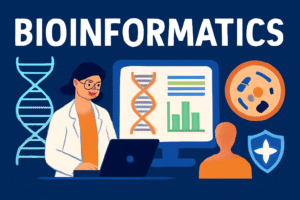
Why Learning Bioinformatics is Essential for the Future of Science and Healthcare
In today’s rapidly advancing world of science and technology, bioinformatics is becoming an increasingly essential skill for students, researchers, and professionals in healthcare, biology, and data science. This interdisciplinary field is unlocking new potential in areas like genomics, drug discovery, and personalized medicine.

UAE Makes ChatGPT Plus Free for All Citizens: A Global First
In a groundbreaking move, the UAE has made ChatGPT Plus available for free to all its citizens, marking a significant step in the global AI landscape. This initiative aims to enhance access to advanced AI tools and foster innovation across various sectors in the country.

NLP Mastery Guide: From Zero to Hero with HuggingFace | Codanics
Master Natural Language Processing from basics to advanced concepts using HuggingFace Transformers. Learn text processing, sentiment analysis, and build real-world NLP applications with Python.

Scikit-Learn Mastery Guide: Complete Machine Learning in Python
Master machine learning in Python with this comprehensive Scikit-Learn guide. Learn essential algorithms, model evaluation techniques, and practical implementation for data science projects.
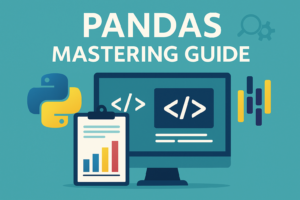
Pandas Mastery Guide for Data Scientists | Codanics
Pandas Mastery Guide: From Beginner to Pro | Codanics 0% 🌙 ↑ Pandas Mastery Guide: From Beginner to
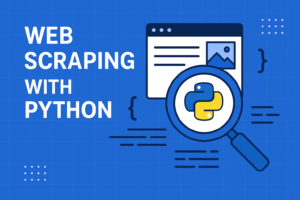
Web Scraping with Python | Codanics
Web Scraping with Python | Codanics Guide Web Scraping with Python: The Ultimate Guide for Beginners & Pros

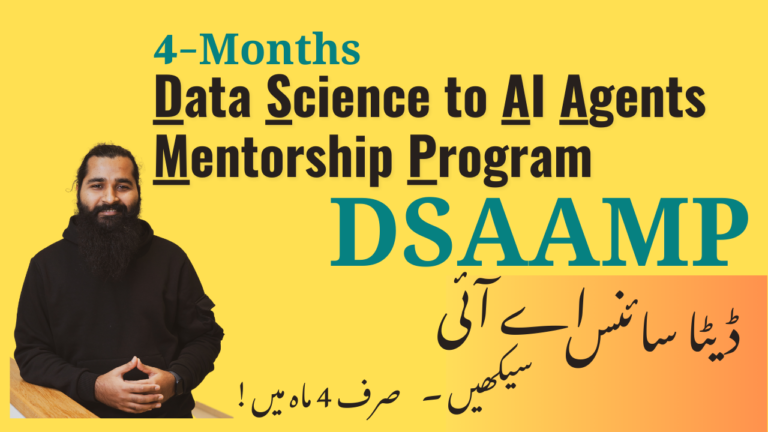

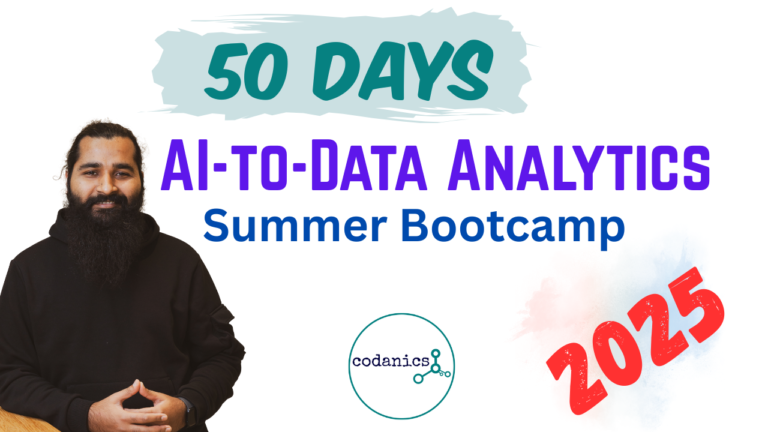



Wonderful.
A brief review, Done!
Such an Amazing way to describe Algebra for Data Science and Machine Learning.this blog help us to understand Algebra very well …
Different branches of mathematics just has been defined here. Every branch of math is a complete subject and enough time is required to study it. A blog is required which give topics of each branch of mathematics essentially required to be studied for datascience.
Amazing blog
I liked algebra categorization in two parts Algebra-1 & Algebra-2
I think, Algebra-1 contains basic and intermediate algebra and Algebra-2 contains advanced algebra. Great sir!!!
amazing technique of teaching, learn it very easily
A very comprehensive and understandable aticle about Algebra
Amazing blog.
I read a detail information about Algebra and its important, use in Data Science, Machine Learning and AI.
Exclusive blog on “Algebra for Data Science and Machine Learning”. In this blog provide me the fundamental concepts of algebra and how it is applied in data science and machine learning.
It explained all the basic and necessary concepts related to Algebra.
Amazing blog
A nice and informative blog
amazing blog
One of the best blog on algebra I have ever read. Great effort really appreciated.